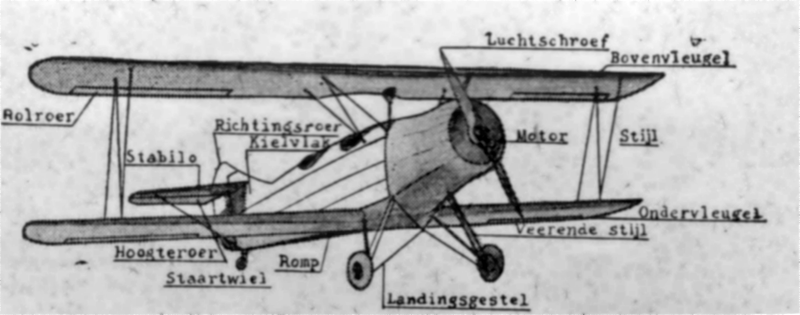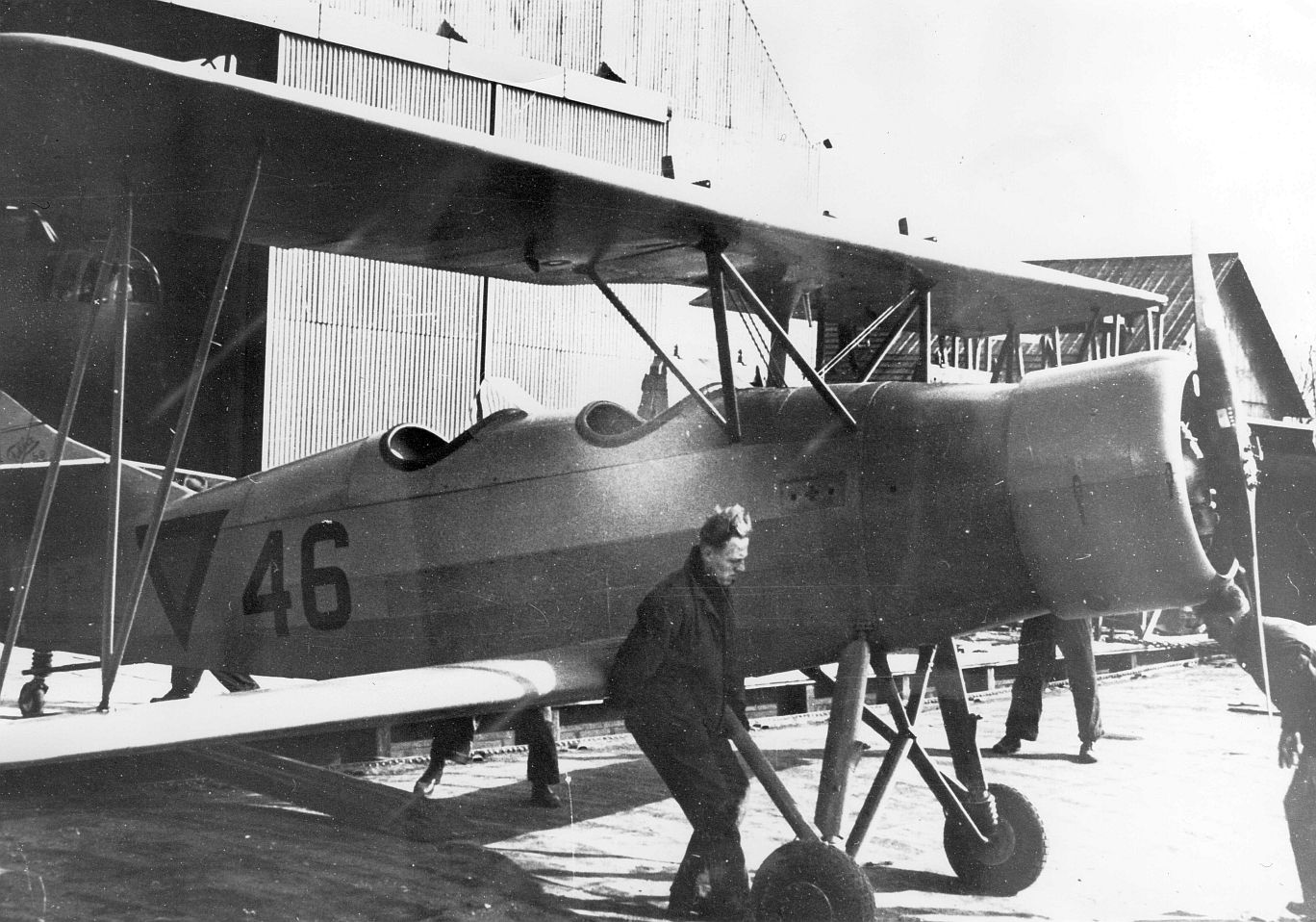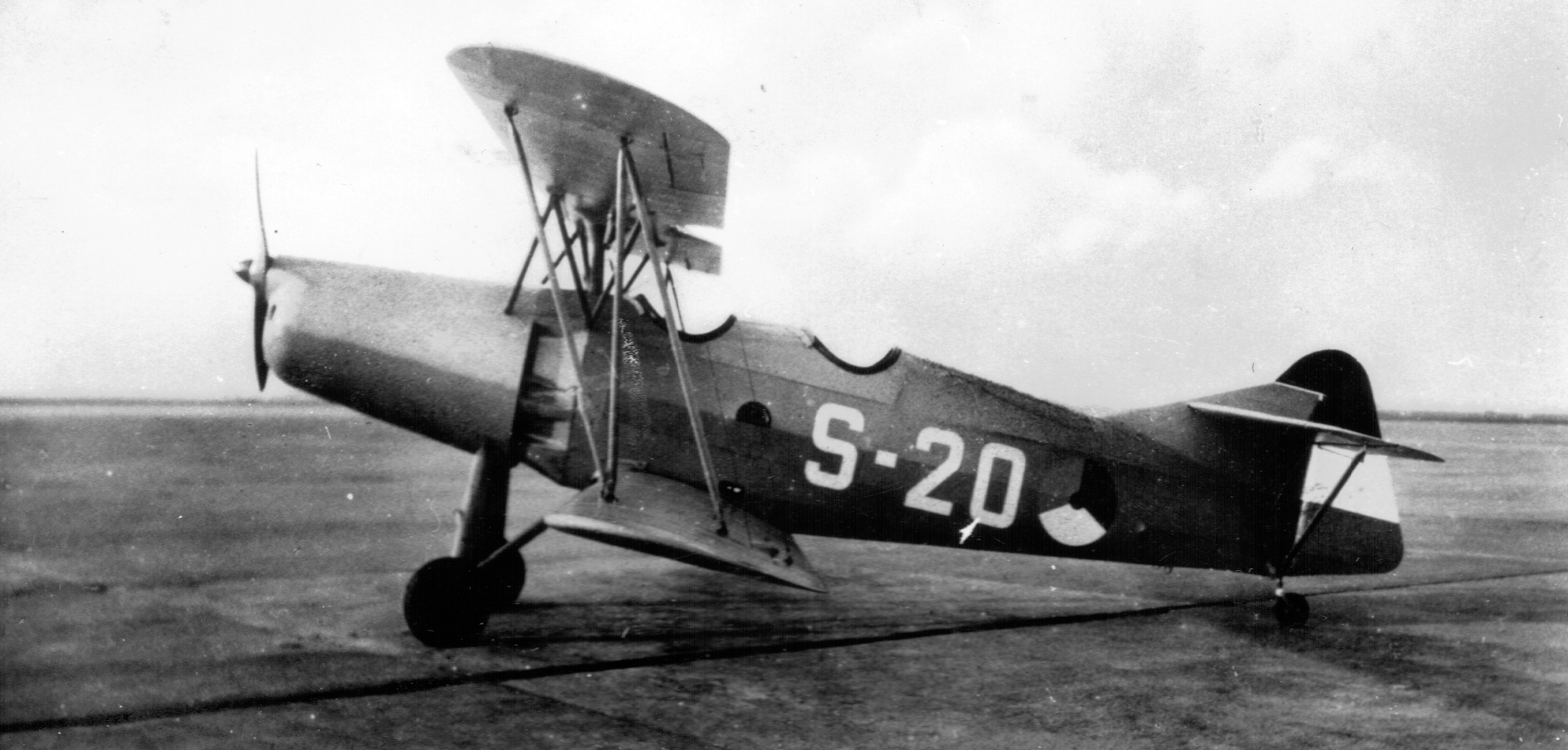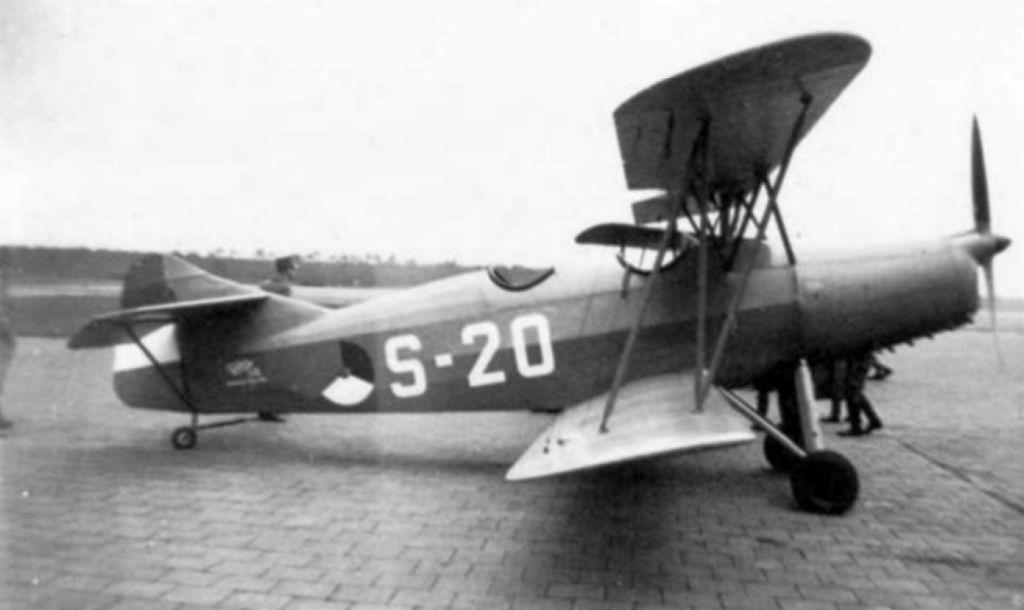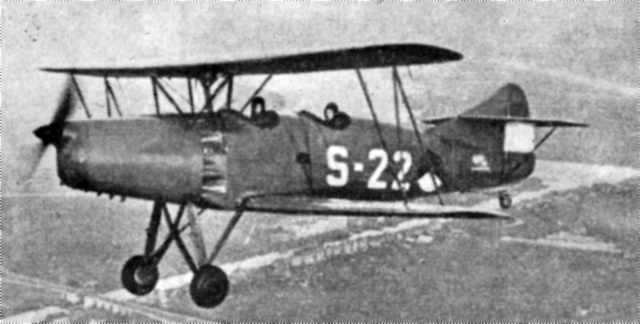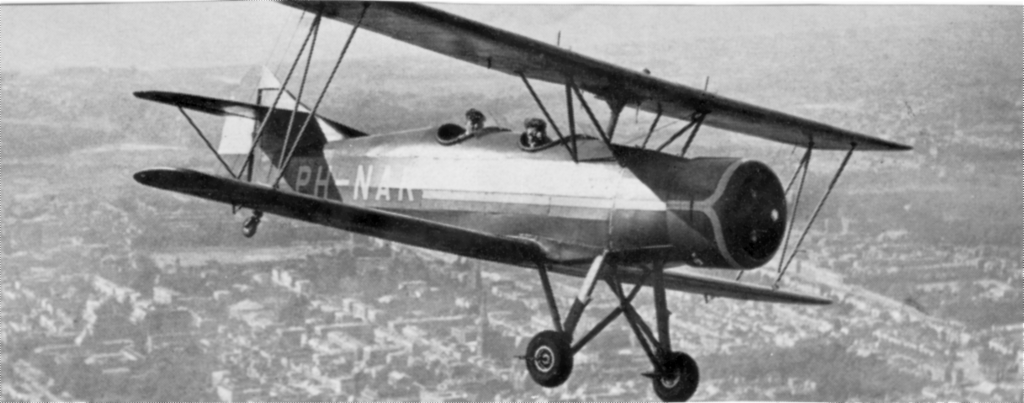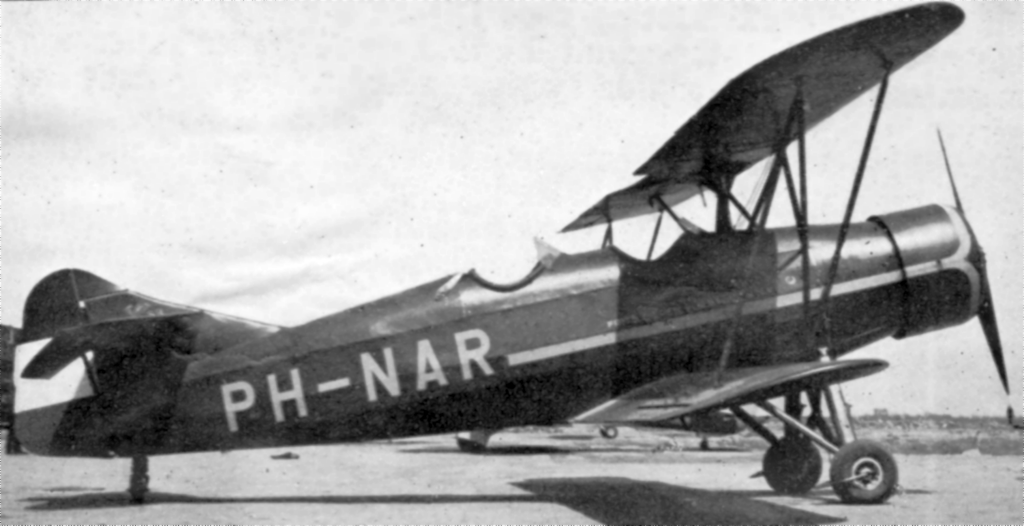The Fokker S.IX
Preliminary translation
The Fokker S.IX/1 was delivered to the LVA the Aviation Department.
With the engine of the Armstrong-Siddeley Genet Major of 165 hp.
After the Second World War, three more were built.
The Fokker S.IX/2 was delivered to the MLD, the Naval Aviation Service, from 1938 onwards.
With the engine of the Menasco Buccaneer of 168 hp.
The S.IX of the LVA | The S.IX of the MLD | The S.IX after the war
Click on the photo to enlarge the photo
The S.IX of the LVA
-
00
FOKKER S.IX 1937 The S.IX biplane was developed in 1937 as a training aircraft for initial training and as an aerobatic aircraft. Two versions were built in series in Amsterdam, namely one with the 165 hp Armstrong-Siddeley Genet Major radial engine, and one with the 168 hp Menasco Buccaneer inline engine. The prototype of the S.IX had the registration X-3. The Aviation Department at Soesterberg replaced the S.IV aircraft in use with twenty S.IX with Genet Major engines. These radial engines were built under license by Kromhout in Amsterdam. The Royal Netherlands Navy purchased fifteen Menasco Buccaneer S.IXs for its initial training of pilots for the MLD. After the war, three S.IXs were built with Kromhout Genet Majors that were still present and delivered to Frits Diepen Vliegtuigen at Ypenburg.Button -
01
The prototype was to be delivered to both LVA and MLD from 1938 onwards, that was the plan. Pilot Hidde Leegstra of the LVA and Fokker technician F. Stok flew it in on 25 January 1938. An important difference with the first version was that both the stabilizer and the elevator were eventually placed in a higher position. The registration was provisionally “X-3”. As is so often the case with Fokker prototypes, the X was used as the first letter. The first engines supplied were initially the Armstrong Siddeley Genet Major of 165 hp. Soon followed by the license-built Kromhout, also of 165 hp. The approaching war led to an acceleration of the delivery of the ordered aircraft.Armstrong Siddeley Genet Major -
02
The first S.IX delivered to the LVA with '31' as registration. LVA eventually bought twenty-four of them but it eventually became twenty, with the registrations 31 to 50. The S.IX training aircraft deviated from the usual green colour of the LVA because they became medium blue. After assembly at the Fokker Vliegbedrijf at Schiphol airport, they soon left for the elementary flight school at Souburg near Vlissingen. Incidentally, the prototype from the previous photo was eventually requisitioned by LVA and entered service as 996.Button -
03
In the same situation as 31. The tail no longer has the red, white and blue paint.Button -
04
Simple drawing with clear indication of the most important parts of a S.IX.Button -
05
Here is the 36 of the LVA with the red-white-blue rosette. The 31 to 41 were still given the air-cooled Armstrong Siddeley Genet Major engines of 165 hp. This was to keep up the pace of delivery to the LVA.Button -
06
A nice picture of the S.IX 45 of the LVA, now with the Kromhout Genet Major engine of 165 hp built under license. The place of installation of that engine could well be the Kromhout factory. The training aircraft 42 to 50 all got those licensed engines. Some sources mention that S.IX aircraft were also built under license at Kromhout in Amsterdam Noord. The orange mobilization triangles have now been applied to these training aircraft.The Kromhout factory (Dutch text) -
7.1
Button -
08
This could be the same hangar as in photo 6 and 7, but from the inside. Work is being done on the older CV D 639 of the LVA. At the front, the metal plating of the front cockpit fuel tank and engine has been removed. At the back, work is also being done on the front cockpit of the S.IX/1. This is normally the place of the student pilot.Button
View more
The S.IX of the MLD
-
12
After the prototype of the S.IX /1, the first series machine in 1937 is the S.IX/2. This is intended for the MLD, Marine Luchtvaart Dienst. Here still equipped with a traditional, lower mounted stabilizer and elevator. Registered as S-20 as the first of the ordered series of 27 pieces. Approximately 17 were eventually delivered as S-20 to S-36. The MLD planes are equipped with a Menasco Buccaneer engine of 168 hp.Button -
13
The S-20 with the new stabilizer, elevator and rudder, in fact with a completely new tail section. Hidde Leegstra pilot, at the LVA, started flying for the MLD in November 1937. Also striking that the tail plane of the LVA training aircraft no longer carried red-white-blue. At the Naval Aviation Service this country sign remained in use.Button -
14
The S-20 in full flight and with the Marine Vliegkamp De Kooij near Den Helder as its permanent base. Deliveries of the S.IX/2 ran from 1 June 1938 to 21 October 1938. Some technical data: Wingspan 9.5 m, length 7.6 m, height 2.9 m, wing area 23 m2 Engine: Menasco Buccaneer 168 hp air-cooled. Empty weight 685 kg, flying weight 975 kg.Menasco Buccaneer -
15
The S-20 of MLD. More technical data: Max. speed 180 km/h, cruising speed 152 km/h, landing speed 80 km/h Ceiling 4500 m, flight range 650-740 km. According to the MLD statement fifteen were delivered, but it is also stated that seventeen were delivered. Fifteen pieces are the S-20 to S-34, but there are higher registrations, so seventeen could be the correct number.Button -
16
The S-20 of MLD Construction numbers The first number comes from the Fokker factories. The second number comes from the Naval Aviation Service. 5467 S-20 5475 S-28 5468 S-21 5476 S-29 5469 S-22 5477 S-30 5470 S-23 5478 S-31 5471 S-24 5482 S-32 5472 S-25 5483 S-33 5473 S-26 5484 S-34 5474 S-27Button -
17
Here the S-22 of MLD, just like the other aircraft of this S.IX type delivered in 1938. It remains a remarkable story that LVA and MLD ordered the same training aircraft, but each chose a different engine. The same engine could also be more advantageous. But that turned out differently......Button -
18
The S-23 ready for take-off with the instructor almost in place. The front cockpit is still empty. At the front the engine is about to be started. The location of the action is probably Soesterberg airfield. The Menasco Buccaneer engine of the MLD version gives a nice sleek look. The Armstrong Siddeley Genet Major engine of LVA gives a somewhat clumsy look at the front.Button -
19
Five S.IX/2 training aircraft of MLD in 1938. The photo was almost certainly taken at naval air base De Kooij. From left to right the S-34, S-33, S-37, S-28 and S-22. On the far left there is construction work going on for a new hangar.Button
View more
The S.IX after the war
-
09
Immediately after the Second World War, three more S.IX/1 aircraft were built. They were given the registrations PH-NAR, PH-NAS and PH-NAT. The engines were also the Kromhout Genet Major of 165 hp. Due to the license construction, these engines will have survived the war at Kromhout.Button -
10
They are painted red and given the text "Frits Diepen Vliegtuigen" next to the registration. Later they go to Aero Holland NV in Ypenburg. There they provide sightseeing flights.Button -
11
This S.IX/1 is one of the 'Frits Diepen aircraft' built in 1946. The Youth Aviation Brigade was an organisation that existed from 1954 to 1966. It was part of the Royal Dutch Aviation Association. The intention was to interest young people in flying.Button
View more





